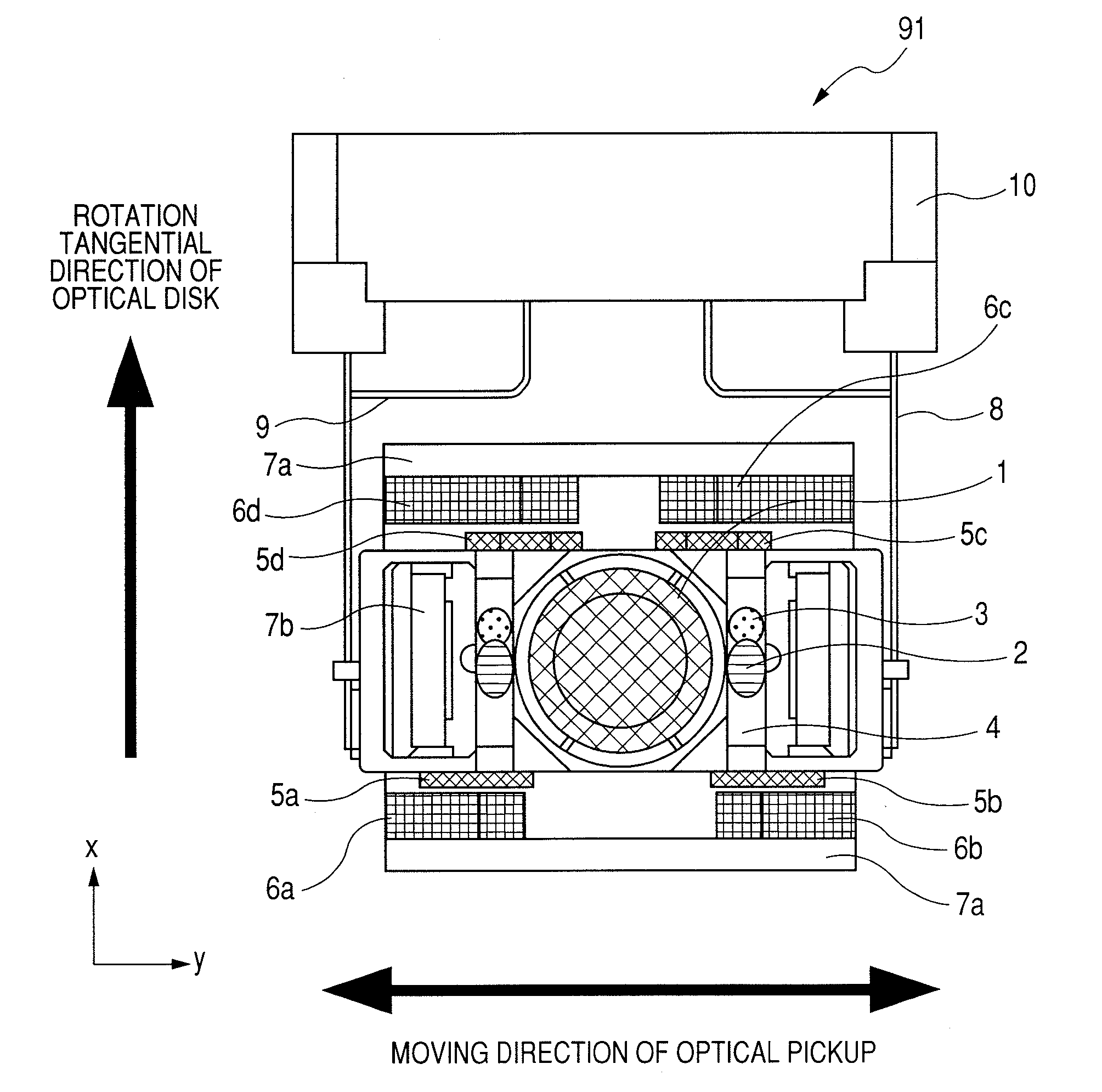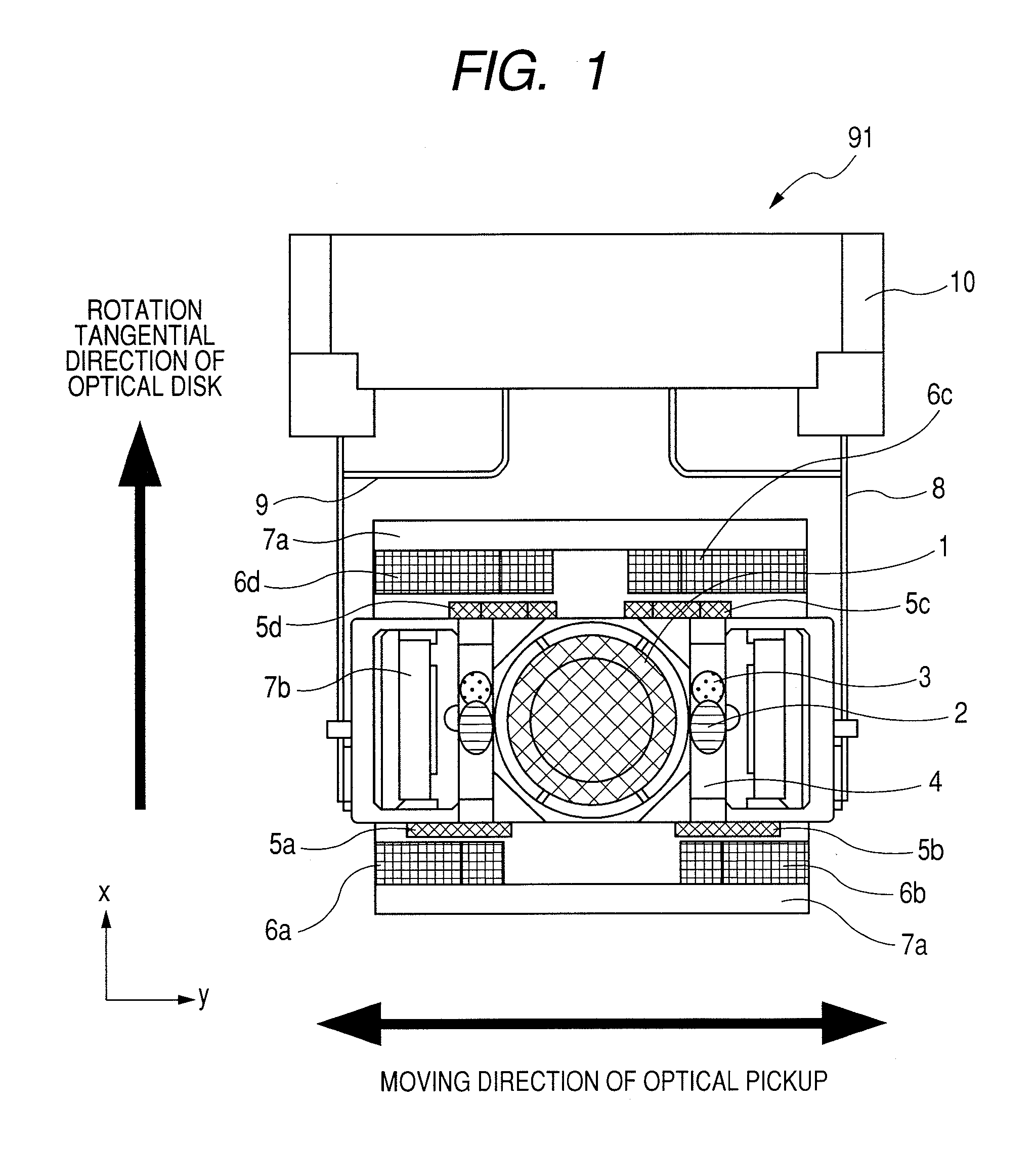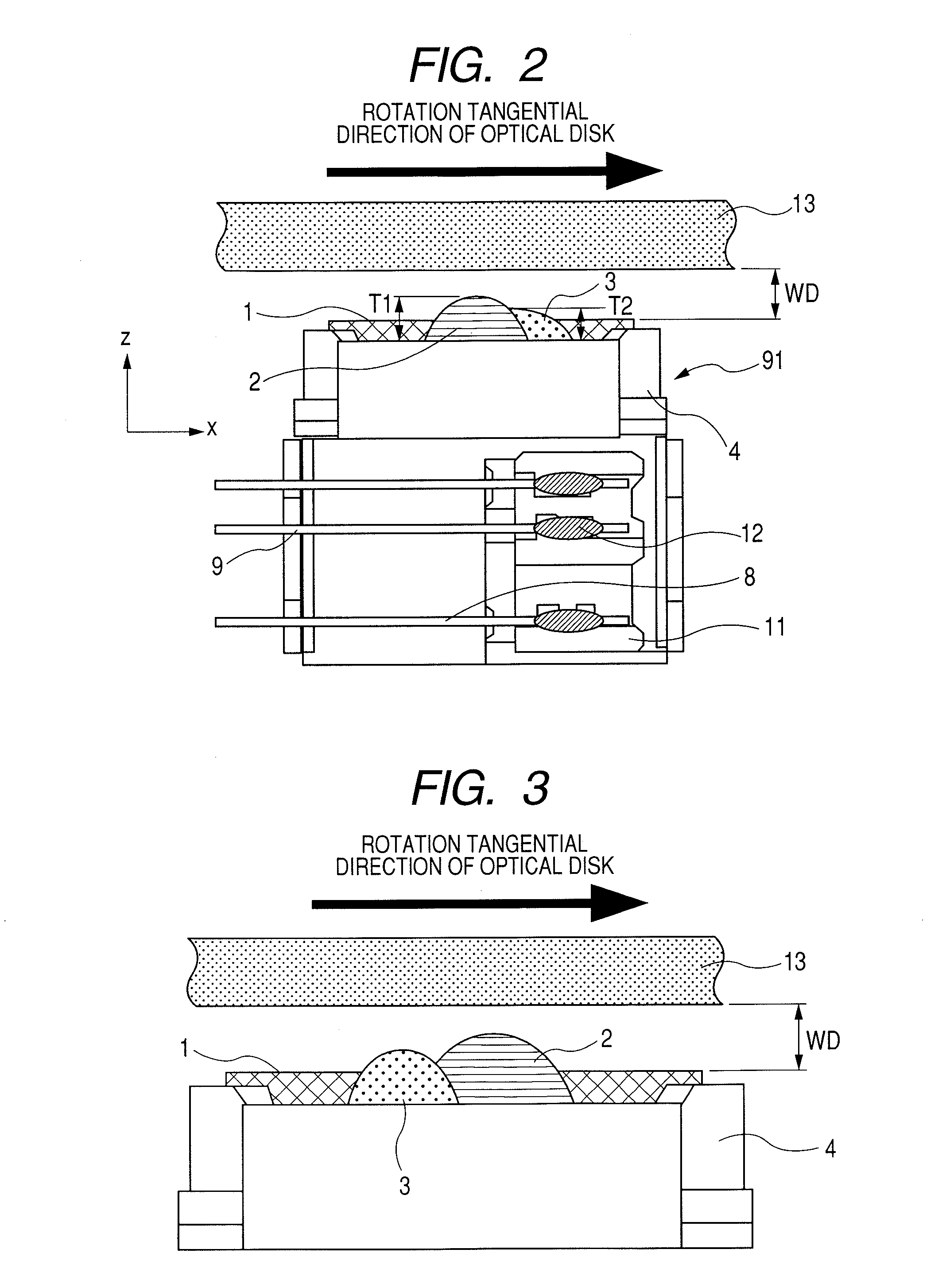Optical pickup device and optical disc drive apparatus
a pickup device and optical disc technology, applied in the direction of data recording, instruments, disposition/mounting of heads, etc., can solve the problems of increased cost, increased manufacturing process, and difficulty in assembly, so as to reduce the cost of the optical pickup device, prevent damage to the objective lens, and form the disc protector. easy
- Summary
- Abstract
- Description
- Claims
- Application Information
AI Technical Summary
Benefits of technology
Problems solved by technology
Method used
Image
Examples
first embodiment
[0046]A first embodiment of the present invention will be described with reference to FIGS. 1 to 5.
[0047]FIG. 1 is a top view and FIG. 2 is a side view of an actuator portion according to the first embodiment of the present invention. Referring to FIGS. 1 and 2, a lens holder 4 has mounted thereon an objective lens 1, first protrusions 2 formed of a first adhesive, second protrusions 3 formed of a second adhesive, an AF coil (not shown), and TR coils 5 (5a to 5d). The lens holder 4 is attached to a dumping holder 10 by a suspension wire 8 and a T wire 9. The above attaching members are formed of various adhesives and solder. As shown in the side view of FIG. 2, the first protrusions 2, which are formed of the first adhesive, protrude toward the optical disc 13 (upward) and have a height (or thickness) T1 of approximately 0.25 mm. The second protrusions 3, which are formed of the second adhesive, also protrude toward the optical disc 13 (upward) and have a height (or thickness) T2 of...
second embodiment
[0055]A second embodiment of the present invention will be described with reference to FIGS. 6 and 7. FIGS. 6 and 7 are side views of actuator portions according to the second embodiment of the present invention. The actuator portions of the present embodiment differ from those of the first embodiment in that the second protrusions 3 are first formed by application of the second adhesive before forming the first protrusions 2 by application of the first adhesive. This approach may be advantageous depending on the types of adhesive materials used. For example, UV cure adhesives and thermosetting adhesives generally tend to exhibit poor adhesion to silicone resins (or silicone-based adhesives). On the other hand, silicone resins may exhibit good adhesion to UV cure adhesives and thermosetting adhesives. Therefore, when the first adhesive is a condensation-polymerized silicone resin (a silicone-based adhesive), the second adhesive (a UV cure adhesive or a thermosetting adhesive) may be...
third embodiment
[0057]A third embodiment of the present invention will be described with reference to FIGS. 8 to 10. FIGS. 8 to 10 are side views of actuator portions according to the third embodiment of the present invention. The actuator portions of the present embodiment differ from those of the first and second embodiments in that the area to which the first adhesive is applied includes a convex portion 2a or a concave portion 2b or 2c, as shown in FIGS. 8 to 10. These convex and concave portions can be used to position the first adhesive when it is applied to the lens holder 4. Especially, the concave portions 2b and 2c may be grooves that extend in the direction of movement of the optical pickup device and pass through opposing sides of the lens holder 4 that sandwich the objective lens 1. This arrangement is preferred since it facilitates escape of moisture and irradiation of the adhesive with UV light. This prevents any portion of the adhesive from being left unhardened, or reduces the time...
PUM
| Property | Measurement | Unit |
|---|---|---|
| thickness | aaaaa | aaaaa |
| thickness | aaaaa | aaaaa |
| particle size | aaaaa | aaaaa |
Abstract
Description
Claims
Application Information
 Login to View More
Login to View More - R&D
- Intellectual Property
- Life Sciences
- Materials
- Tech Scout
- Unparalleled Data Quality
- Higher Quality Content
- 60% Fewer Hallucinations
Browse by: Latest US Patents, China's latest patents, Technical Efficacy Thesaurus, Application Domain, Technology Topic, Popular Technical Reports.
© 2025 PatSnap. All rights reserved.Legal|Privacy policy|Modern Slavery Act Transparency Statement|Sitemap|About US| Contact US: help@patsnap.com



